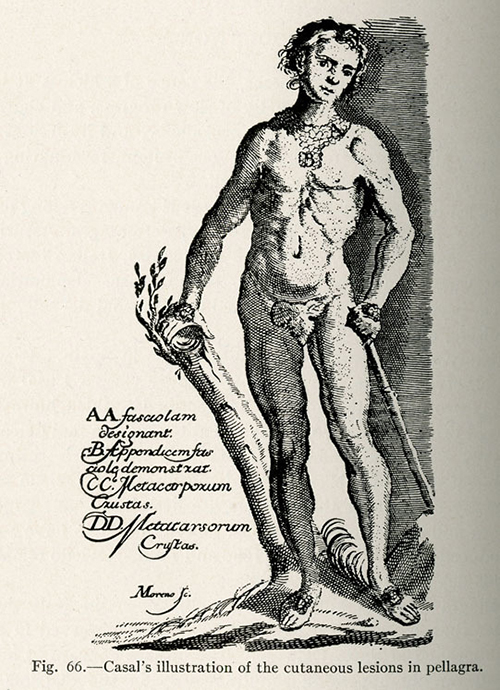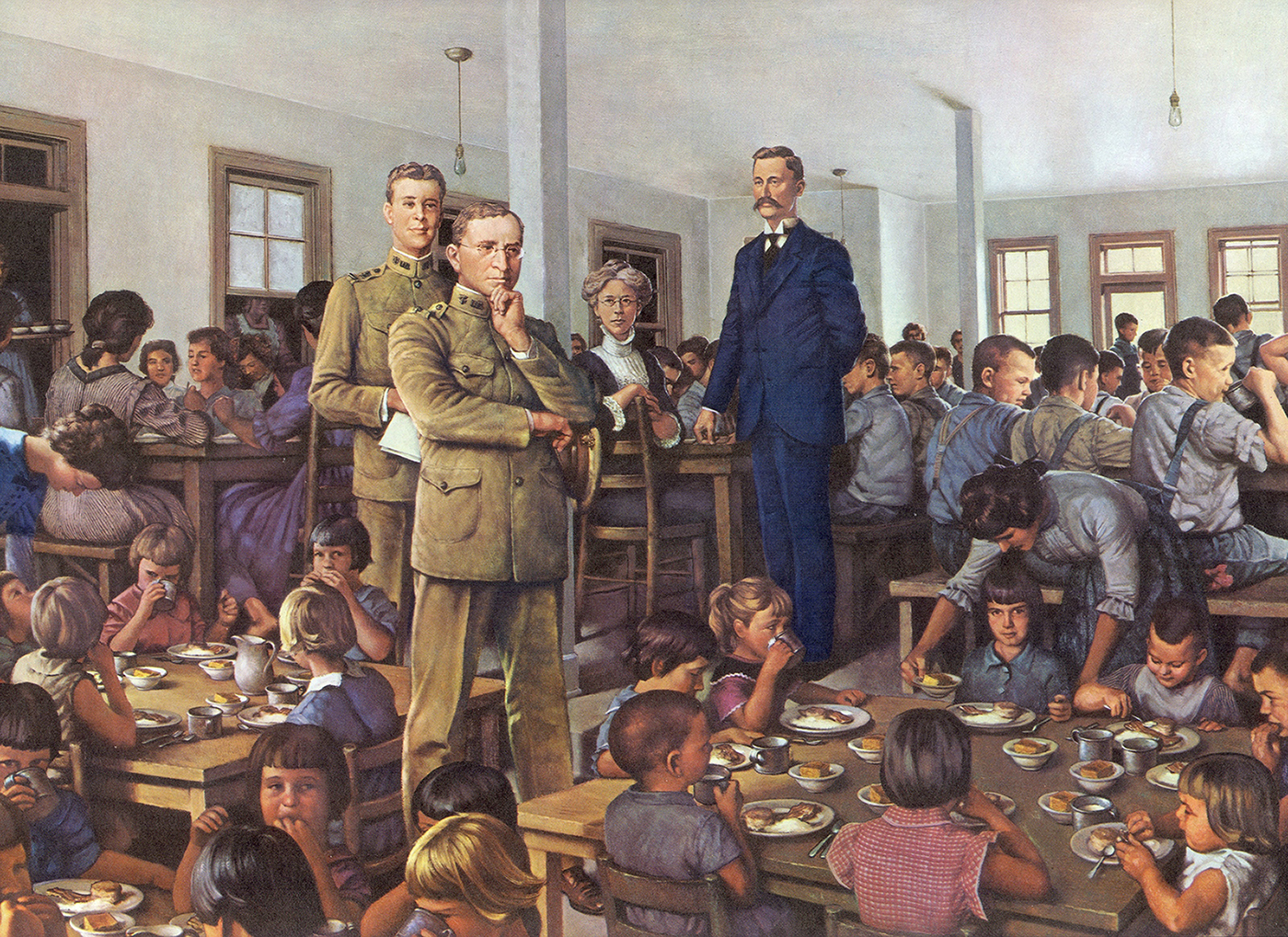 Title page from the 2nd volume of Gaetano Strambio’s De Pellagra. Click here to view all 3 volumes.Pellagra, a nutritional deficiency disease caused by the lack of vitamin B3 (niacin) in the diet, is characterized by the four-d’s: dermatitis, diarrhea, dementia, and in some cases death. It is a global disease affecting places where the population diet is primarily maize-based. First described in Spain by Gasper Casal y Julian in 1735, it remained endemic in Southern Europe and the Mediterranean for close to two hundred years before it was recognized in the U.S. in the early 20th century.
Title page from the 2nd volume of Gaetano Strambio’s De Pellagra. Click here to view all 3 volumes.Pellagra, a nutritional deficiency disease caused by the lack of vitamin B3 (niacin) in the diet, is characterized by the four-d’s: dermatitis, diarrhea, dementia, and in some cases death. It is a global disease affecting places where the population diet is primarily maize-based. First described in Spain by Gasper Casal y Julian in 1735, it remained endemic in Southern Europe and the Mediterranean for close to two hundred years before it was recognized in the U.S. in the early 20th century.
Due to its persistence in the area, pellagra drew the attention of some of the leading physicians of Italy and Spain. In 1778, Italian physician Gaetano Strambio (1752-1831) established a special hospital for pellagra patients in Legnago, Italy. Gaspar Casal’s illustration of pellagra’s cutaneous lesions around the collar.His experiences treating pellagrins prompted a three-volume work, De Pellagra (1786-89), in which he proves that pellagra is not merely a skin disease by showing that it can occur without characteristic dermatitis. Strambio attributes the cause of pellagra to spoiled bread and polenta. In 1869 another Italian, Cesare Lombroso (1836-1909), initiated the theory that pellagra is caused by a toxin in deteriorated maize.
Gaspar Casal’s illustration of pellagra’s cutaneous lesions around the collar.His experiences treating pellagrins prompted a three-volume work, De Pellagra (1786-89), in which he proves that pellagra is not merely a skin disease by showing that it can occur without characteristic dermatitis. Strambio attributes the cause of pellagra to spoiled bread and polenta. In 1869 another Italian, Cesare Lombroso (1836-1909), initiated the theory that pellagra is caused by a toxin in deteriorated maize.
In early 20th century America, pellagra seemingly emerged out of nowhere when, in late summer of 1906 near Mobile, Alabama, Dr. George H. Searcy noted a peculiar malady affecting 88 patients at the Mount Vernon Insane Hospital, a state facility for the “colored insane.” Searcy soon realized that he was facing an outbreak of pellagra with its characteristic four-ds. He quickly reported his findings to his Medical Association of Alabama colleagues in 1907 (Click here to view the article).
Soon, pellagra would become epidemic throughout the South, and thus the discovery of its etiology became crucial and much-debated. Lombroso’s theory of toxic cornmeal resurfaced, while eugenicists, promoting a popular but misguided theory of social “betterment,” suggested that its origin lay in racial or hereditary factors. In 1912 the privately endowed Thompson-McFadden Commission made an on-site study of pellagra in the South Carolina mill village of Spartanburg and concluded that the disease was infectious in nature. This erroneous report would haunt the medical profession for years as they searched for the real cause and cure of pellagra.
In 1914, the U.S. Public Health Service’s Dr. Joseph Goldberger (1874-1929) was already known for his success in fighting U.S. epidemics when he was asked to investigate pellagra. Through observations and experiments at Southern orphanages and prisons, Goldberger found that the disease was not infectious, but instead was caused by a deficiency in the diet. Many poor Southerners consumed a diet solely of meat, meal, and molasses. Low-wages driving high-deficiency diets made the disease economic in origin. Goldberger’s conclusions were correct but unpopular in the South because of their negative implications for the Southern way of life. Also, many in the medical community remained unconvinced since all of Goldberger’s studies were conducted in controlled environments, unlike those of the Thompson-McFadden Commission. In 1918 he rectified this by confirming his conclusions with his own mill village studies, aided by a brilliant statistician, Edgar Sydenstricker.
 Goldberger (center) with his assistant C. H. Waring in one of their 1914 orphanage studies near Jackson, Mississippi.
Goldberger (center) with his assistant C. H. Waring in one of their 1914 orphanage studies near Jackson, Mississippi. 